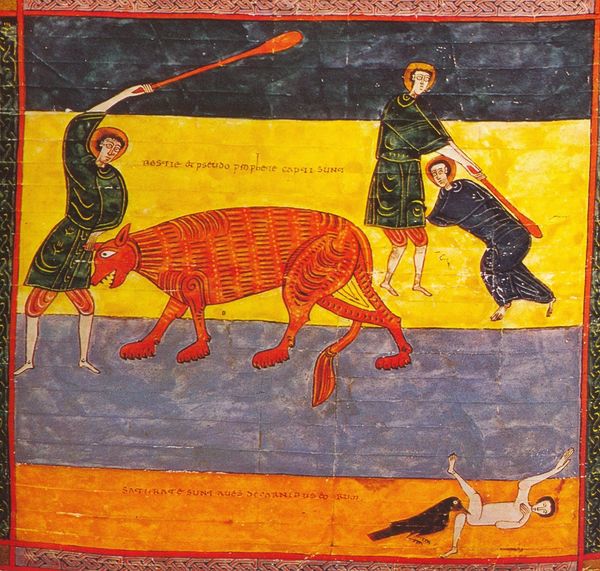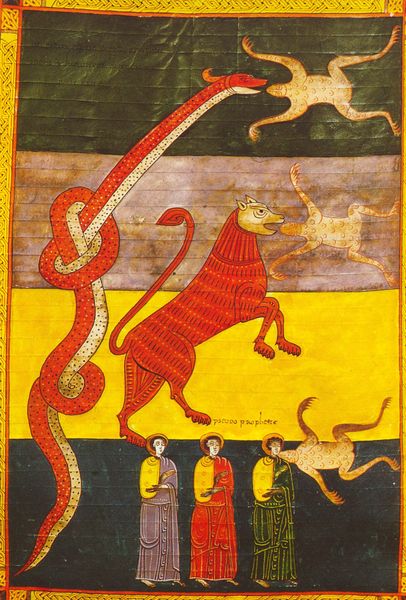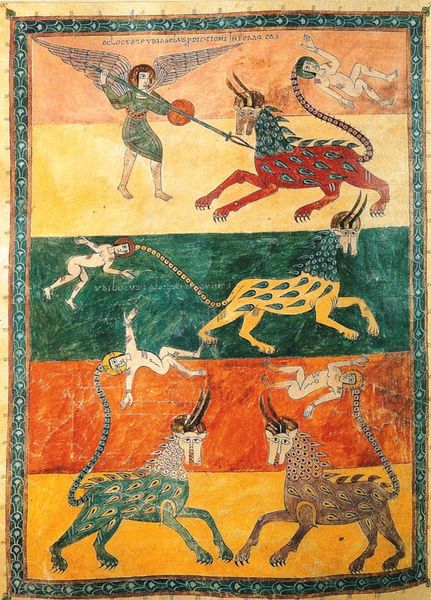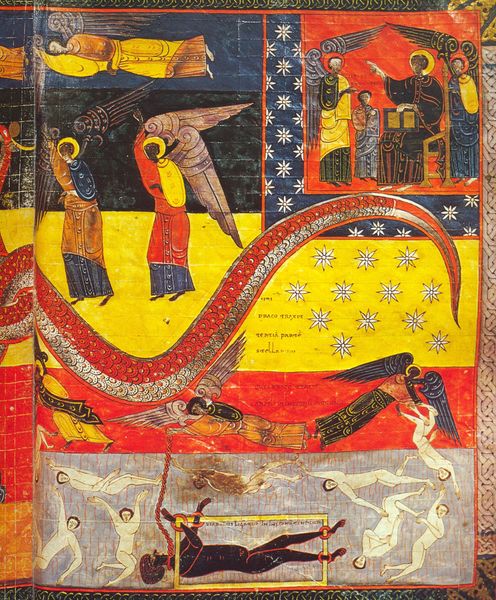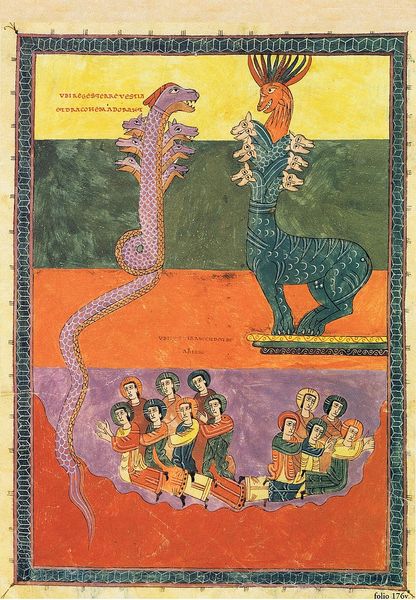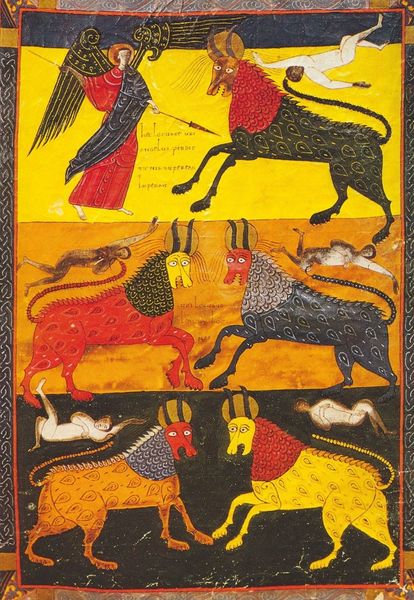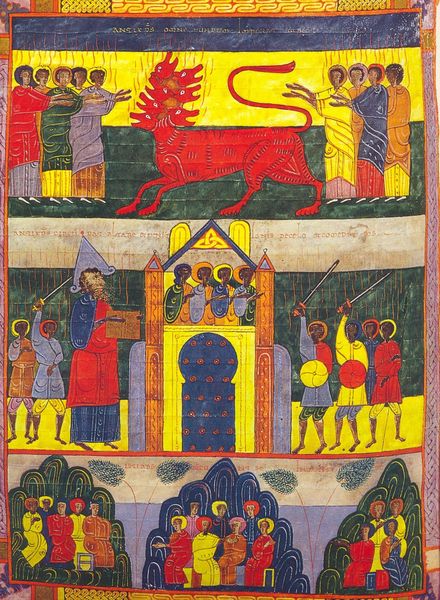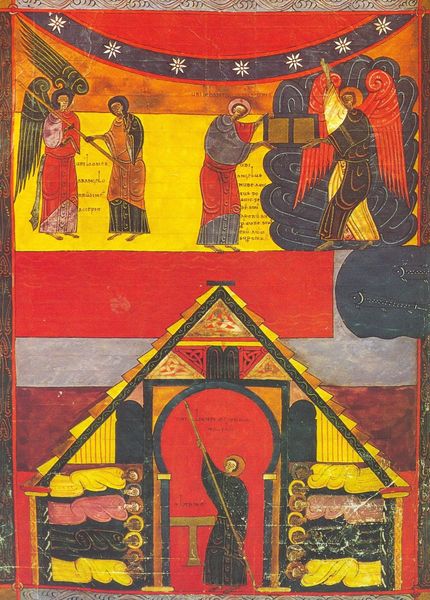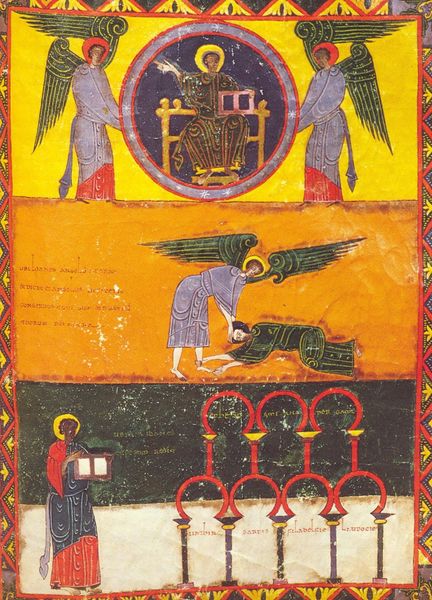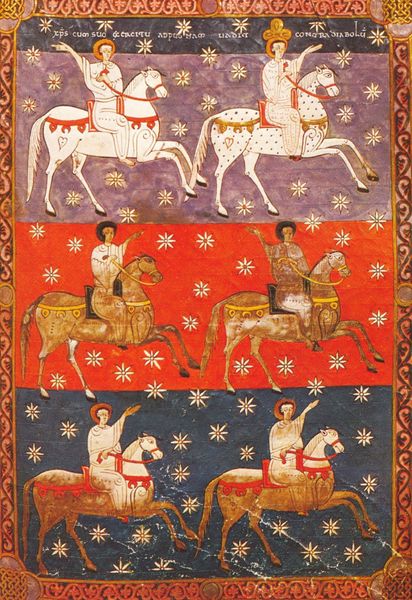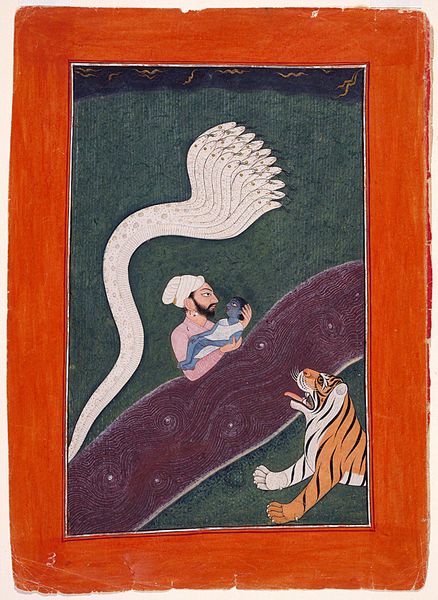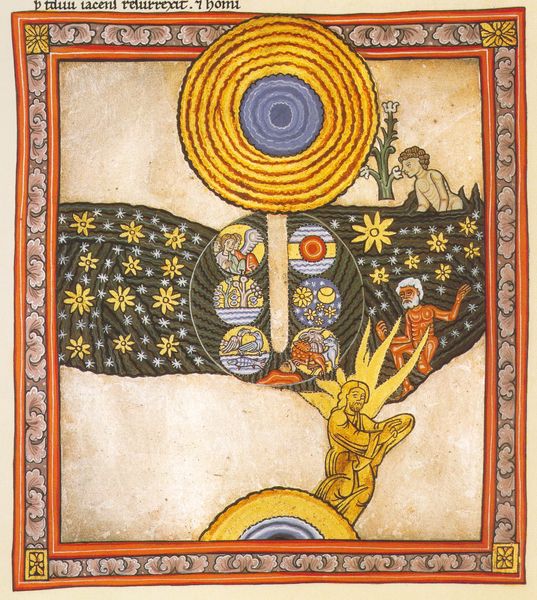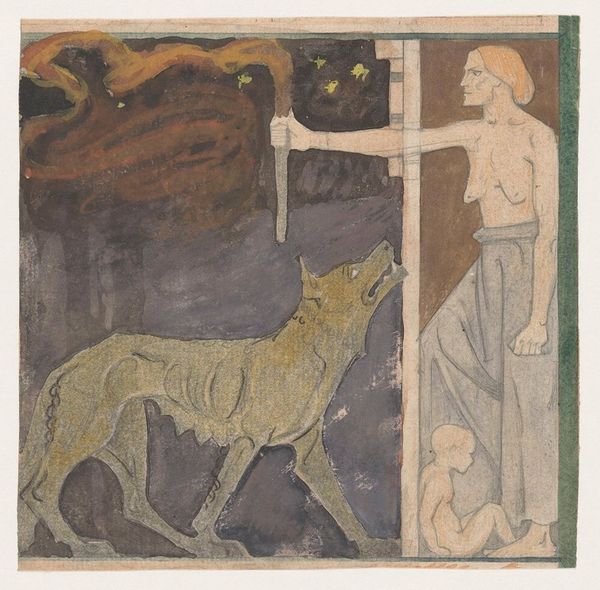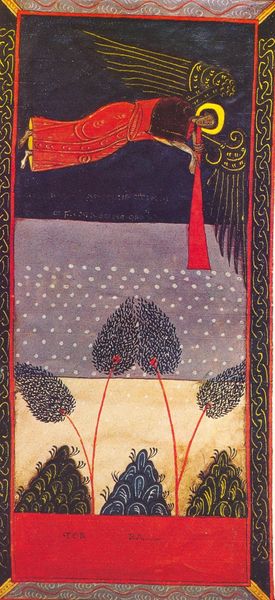
Victoire de l'Agneau sur la Bête. L'image de la Bête, le Dragon et les Rois de la Terre. Apoc. XVII
0:00
0:00
tempera
#
byzantine-art
#
medieval
#
allegory
#
tempera
#
figuration
#
oil painting
#
naive art
#
history-painting
Copyright: Public domain
Facundus painted "Victoire de l'Agneau sur la Bête" around 1050. The piece presents a striking composition of geometric forms and contrasting colors, setting a celestial scene against terrestrial turmoil. The upper register, dominated by a deep blue sky dotted with symmetrical stars, provides a backdrop for the serene lamb, radiating a halo of light and attached to a cross. Below, a sharp division introduces a field of yellow where the bestial conflict unfolds. The stylized figures—the dragon, the beasts, and the kings—tumble and contort in a dramatic, almost chaotic manner. The arrangement of figures and the use of contrasting colors serve to reinforce a powerful semiotic system, where the lamb symbolizes purity and divine authority, while the beasts represent earthly corruption and moral decay. This stark juxtaposition of celestial order and earthly disorder highlights the underlying themes of good versus evil, typical of apocalyptic literature. The formal structure of the painting, therefore, functions as a visual codex, inviting continuous interpretation and reflection on humanity's spiritual journey.
Comments
No comments
Be the first to comment and join the conversation on the ultimate creative platform.
